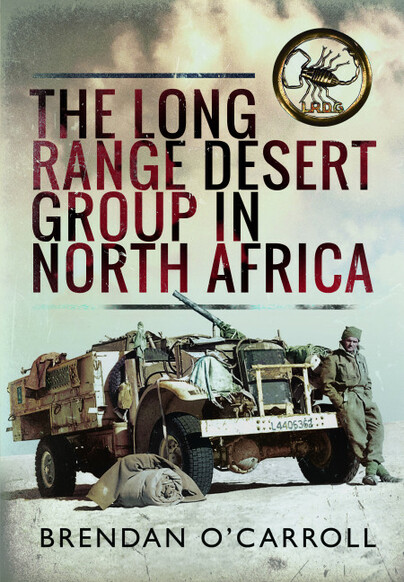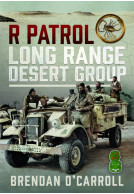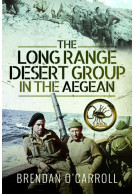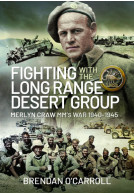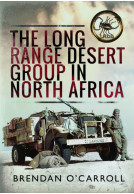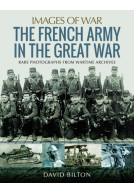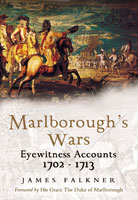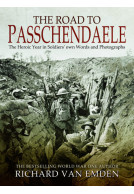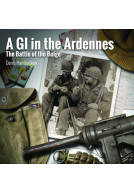The Long Range Desert Group in North Africa (Paperback)
Imprint: Pen & Sword Military
Pages: 256
Illustrations: 300 mono illustrations
ISBN: 9781399030922
Published: 25th March 2025
(click here for international delivery rates)
Order within the next 4 hours, 57 minutes to get your order processed the next working day!
Need a currency converter? Check XE.com for live rates
| Other formats available | Price |
|---|---|
| The Long Range Desert Group in… Hardback Add to Basket | £25.00 |
| The Long Range Desert Group in… ePub (86.5 MB) Add to Basket | £6.99 |
Formed in July 1940 for reconnaissance and intelligence gathering behind enemy lines, the Long Range Desert Group was the first British special force unit. In no time the LRDG earned itself an enviable reputation for deep penetration patrols into German and Italian held territory. Its successes on prolonged missions into harsh terrain and under extreme climatic conditions were out of all proportion to its size. Wide-ranging military skills, including exceptional navigation techniques, and the highest standards of discipline and leadership were required from all ranks.
Many of the previously unpublished and well captioned images in this comprehensive and well researched book come from the collections of LRDG veterans. They show the weapons, equipment, uniforms and insignia used and, together with personal accounts and operational reports, bring to life the extraordinary achievements of this legendary unit.
The result is a fascinating record of the LRDG’s contribution to the Allied victory in North Africa.
4 out of 5
Army Rumour Service (ARRSE)
Read the Full Review Here
As featured on World War II Today
WW2 Today
The book is well-written, informative, and engaging, and it provides a fascinating insight into the LRDG’s unique and daring operations in the North African desert. A recommended read.
The History Fella
Read the Full Review Here
I have finished reading Brendan O’Carroll’s latest book, The Long Range Desert Group In North Africa and have to say it is truly excellent. It is a page turner that you won’t be able to put down and should be enjoyed with a glass of your favourite tipple.
BOB AMOS-JONES
Using the diaries of those who served with the LRDG, operational reports, association newsletter articles and interviews with veterans this new book has 256 pages, split in to 12 chapters containing 308 photographs. The chapters cover the formation of the LRDG, dress and insignia, their vehicles, the heavy section, navigation, signals, supplies, weapons, at rest, the road watch, enemy encounters and the Libyan taxi service. There is something here for everyone.
The narrative is superb and meticulously researched, as you would expect from Brendan, and used to give the reader an insight into the photographs that follow. Many of the rare photographs are from the families of those who served and appear in this book for the very first time. You are unlikely to find a better photographic resource so don’t bother looking for one.
Whether you be an amateur historian, researcher, militaria collector, re-enactor, military modeler or build replica vehicles this will be an outstanding resource for you. If you buy one book on the LRDG this year you should make it this one as I believe that it will become as sought after as Kiwi Scorpions in years to come.
Bob Amos-Jones
Long Range Desert Group Preservation Society
About Brendan O'Carroll
Brendan O’Carroll lives in Auckland, New Zealand and recently retired from the New Zealand Customs Service. With a long time interest in military history, his speciality is the Long Range Desert Group. He interviewed over 30 veterans while writing The Kiwi Scorpions: The Story of the New Zealanders in the LRDG (2000), Bearded Brigands (2002) and Barce Raid: The LRDG’s Most Daring Exploit in World War Two. His Pen and Sword titles include The LRDG in the Aegean (2020), The Long Range Desert Group in Action 1940 -1943 and Fighting with the Long Range Desert Group, Merlyn Craw MM's War 1940-1945. He has written numerous other published works and articles. In 2006 his work was recognised by awards from the New Zealand Military Historical Society.







